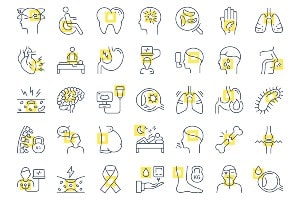About Urea Breath Test

Learn about the disease, illness and/or condition Urea Breath Test including: symptoms, causes, treatments, contraindications and conditions at ClusterMed.info.
Urea Breath Test

| Urea Breath Test |
|---|
Urea Breath Test InformationAre there any risks or complications of the urea breath test?There are no risks or complications of the urea breath test. There is no need to stop any medications (including proton pump inhibitors) prior to performing the urea breath test. How are the results of the urea breath test interpreted?If the isotope is detected in the breath, it means that H. pylori is present in the stomach. If the isotope is not found, H. pylori is not present. When the H. pylori is effectively treated (eradicated) by antibiotics, the test changes from positive (isotope present) to negative (isotope absent). How is this breath test done?For the test, patients swallow a capsule containing urea made from an isotope of carbon. (Isotopes of carbon occur in minuscule amounts in nature, and can be measured with special testing machines.) If H. pylori is present in the stomach, the urea is broken up and turned into carbon dioxide. The carbon dioxide is absorbed across the lining of the stomach and into the blood. It then travels in the blood to the lungs where it is excreted in the breath. Samples of exhaled breath are collected, and the isotopic carbon in the exhaled carbon dioxide is measured. What is the basis of this test?The urea breath test is based on the ability of H. pylori to break down urea, a chemical made up of nitrogen and carbon, into carbon dioxide which then is absorbed from the stomach and eliminated in the breath. (Urea normally is produced by the body from excess or "waste" nitrogen-containing chemicals and then eliminated in the urine.) What is the urea breath test?The urea breath test (UBT) is a test for diagnosing the presence of a bacterium, Helicobacter pylori (H. pylori) in the stomach. H. pylori causes inflammation, ulcers, and atrophy of the stomach. The test also may be used to demonstrate that H. pylori has been eliminated by treatment with antibiotics. |
More Diseases
A | B | C | D | E | F | G | H | I | J | K | L | M | N | O | P | Q | R | S | T | U | V | W | X | Y | Z
Diseases & Illnesses Definitions Of The Day
- Noncancerous Colloid Thyroid Nodule (Thyroid Nodules) ‐ How are thyroid nodules diagnosed?, Introduction to thyroid nodules …
- Skin, Laser Resurfacing (Laser Resurfacing) ‐ CO2 Laser Resurfacing, Complications of Laser Skin Resurfacing …
- Malignant Fibrous Histiocytoma (Bone Cancer Overview) ‐ Are there any treatments or medications that relieve bone cancer pain? …
- Double Vision ‐ Is it possible to prevent double vision?, What are the symptoms and signs of double vision? …
- Ageusia (Taste Disorders) ‐ Are taste disorders serious?, Can taste disorders be treated? …
- Autism Screening and Diagnosis ‐
- Alpha-fetoprotein Blood Test ‐ In which situations are high blood (serum) levels of AFP used as a tumor marker? …
- Polymyalgia Rheumatica ‐ How do health care professionals make a diagnosis of polymyalgia rheumatica? …
- Stump Appendicitis (Appendicitis) ‐ Appendicitis definition and facts, Are there long-term consequences of appendectomy? …
- Gonorrhea (Gonorrhea In Women) ‐ Gonorrhea facts, How is gonorrhea diagnosed?, What are sexually transmitted diseases (STDs)? …